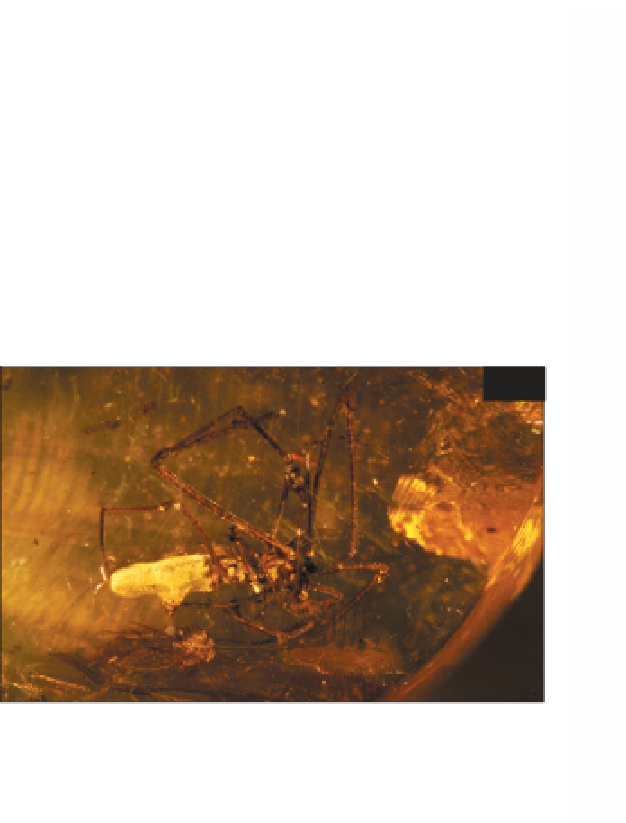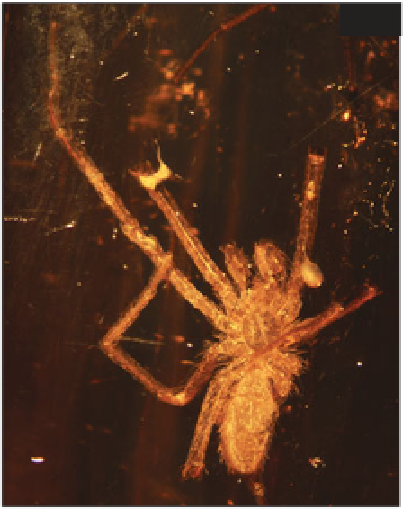Geoscience Reference
In-Depth Information
fauna. The reasons for differences
between the fossil and living faunas seem
to be due to biases in trapping of spiders
in resin. Wandering adult males are
trapped more preferentially than
sedentary adult females, for example
(Penney, 2002). One interesting specimen
of a filistatid spider (
281
) showed how, in
its struggle to release itself from the sticky
resin, it shed some of its legs (autospasy),
which released droplets of blood into the
amber. The flow direction of the resin
around the spider could be worked out
from the position of the blood droplets
(Penney, 2005b).
Vertebrates
Backboned animals are generally too
large and powerful to be trapped in resin,
but some remains do occur; more often, it
is possible to determine the presence of
vertebrate species from fragments such as
feathers and hair, or by indirect means
such as the presence of their parasites.
280
280 The theridiid spider
Argyrodes an common
kleptoparasitic inhabitant of
orb webs of larger spiders
AMPP. Body length about 2.5
mm 0.1 in.
281
281 Blood in amber from a filistatid spider
which has lost some of its leg segments during
a struggle to escape; blood droplets can be
seen, having moved a little way from the
broken leg joint by flowage of the resin
AMPP. Body length about 2.5 mm 0.1 in.




Search WWH ::

Custom Search